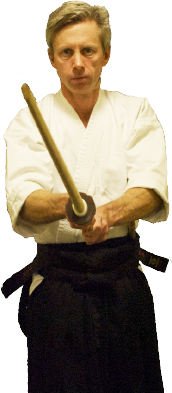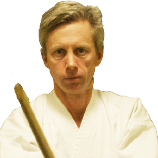We have a practicing Aikido ni dan, which translates to second-degree black belt, on campus—Dr. Dennis Cullinane.
Aikido is a type of Japanese martial art. “I love Aikido because of its philosophy, raw power, and beauty. In Aikido we try to bring the world into harmony,” Dr. Cullinane described.
 Dr. Cullinane’s first brush with the martial art occurred in graduate school. He reminisced, “My first real sensei was a tiny little Japanese woman who was amazing and could take on five attackers at a time. That was 23 years ago. I have studied with a number of senseis since then, including a direct student of the founder of Aikido, Morihei Ueshiba.”
Dr. Cullinane’s first brush with the martial art occurred in graduate school. He reminisced, “My first real sensei was a tiny little Japanese woman who was amazing and could take on five attackers at a time. That was 23 years ago. I have studied with a number of senseis since then, including a direct student of the founder of Aikido, Morihei Ueshiba.”
While practicing, Dr. Cullinane has broken parts of his ribs twice. When asked if these injuries occurred during a competition, he replied, “We don’t compete. We do real-life scenarios with bare hands, knives, swords, or sticks. It can be very kinetic.”
Perhaps hinting at how he sustained his injuries, Dr. Cullinane enthusiastically shared that his favorite attacks and techniques are “being attacked by a sword or baseball bat, or having multiple attackers.”
Addressing his use of weapons in Aikido, Dr. Cullinane said, “I have a katana, or Japanese sword, and lots of wooden weapons, like bokkens (wooden swords), tantos (wooden knives), and the jo, which is a shaft-like weapon about the length of a broomstick. I’ve been in one bar fight in my life and used Aikido then, but with bare hands.”
As a form of physical martial art, Aikido is idiosyncratic. Dr. Cullinane explained, “Aikido emphasizes no offensive techniques, but uses the attackers’ energy and momentum against them by redirecting their attack to a harmonious conclusion—usually meaning the attacker is on the ground and pinned with a joint lock.”
When asked about the possibility of Aikido spreading on campus among students, Dr. Cullinane responded, “I would love for it to be! If people are interested, I’m on-board giving lessons. The great thing about Aikido is that you don’t have to be big and strong. You can be tiny like my old sensei and yet still very effective.”
Even if the art does not take hold on campus, we can learn from Aikido in a more abstract sense. Dr. Cullinane concluded, “[Aikido] can be extended into our daily lives by welcoming and harmonizing with the energy of the universe, rather than fighting against it.”

